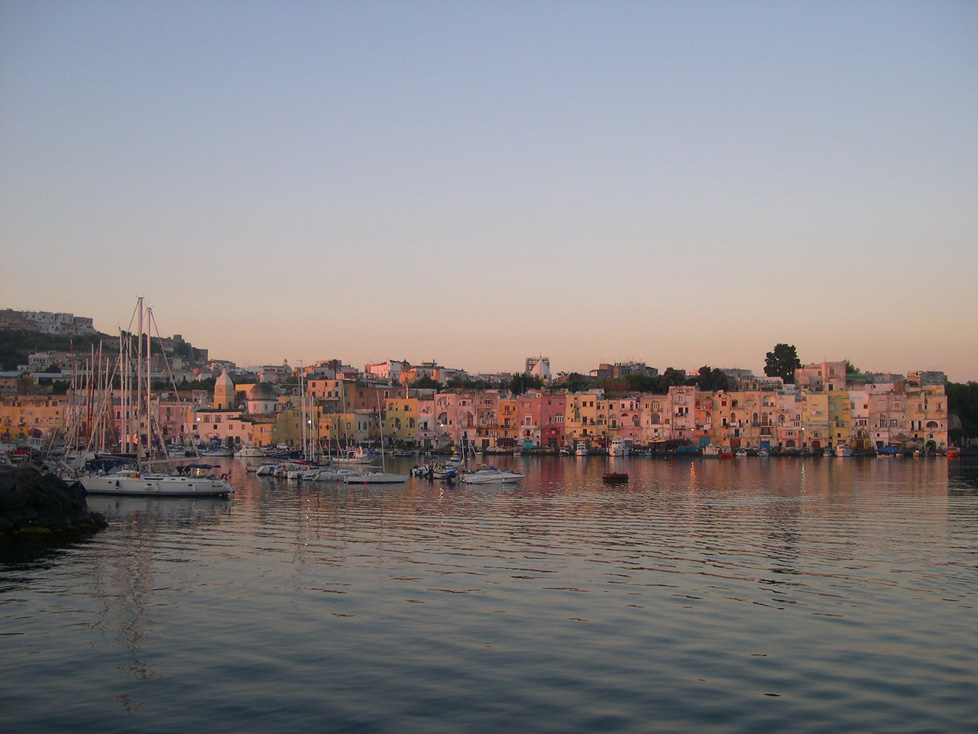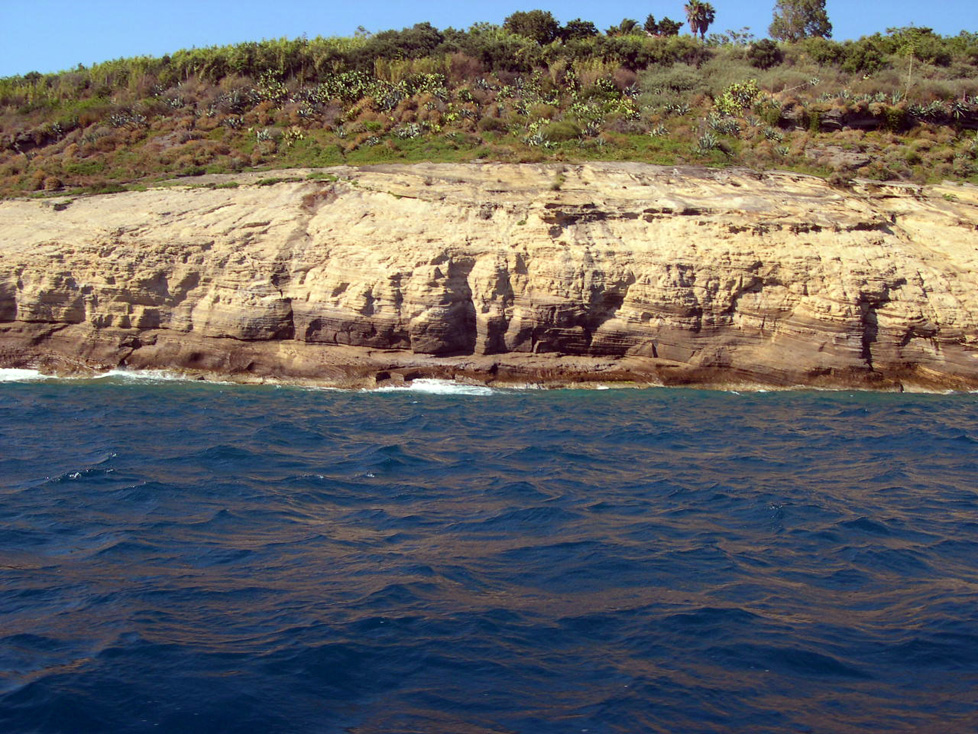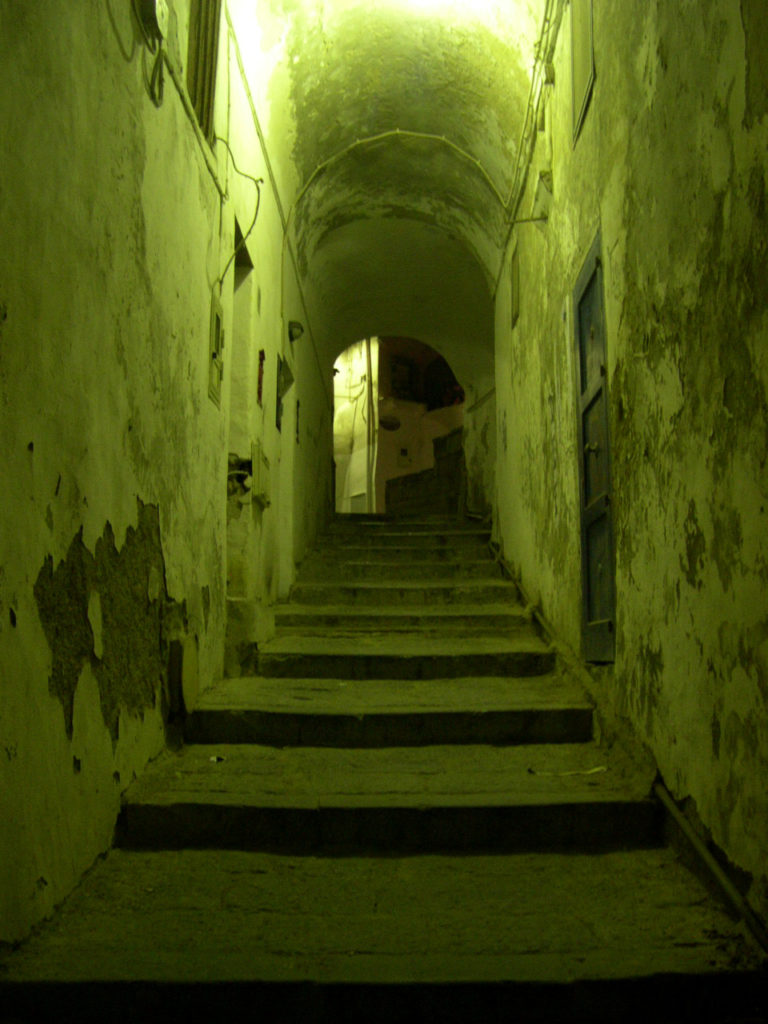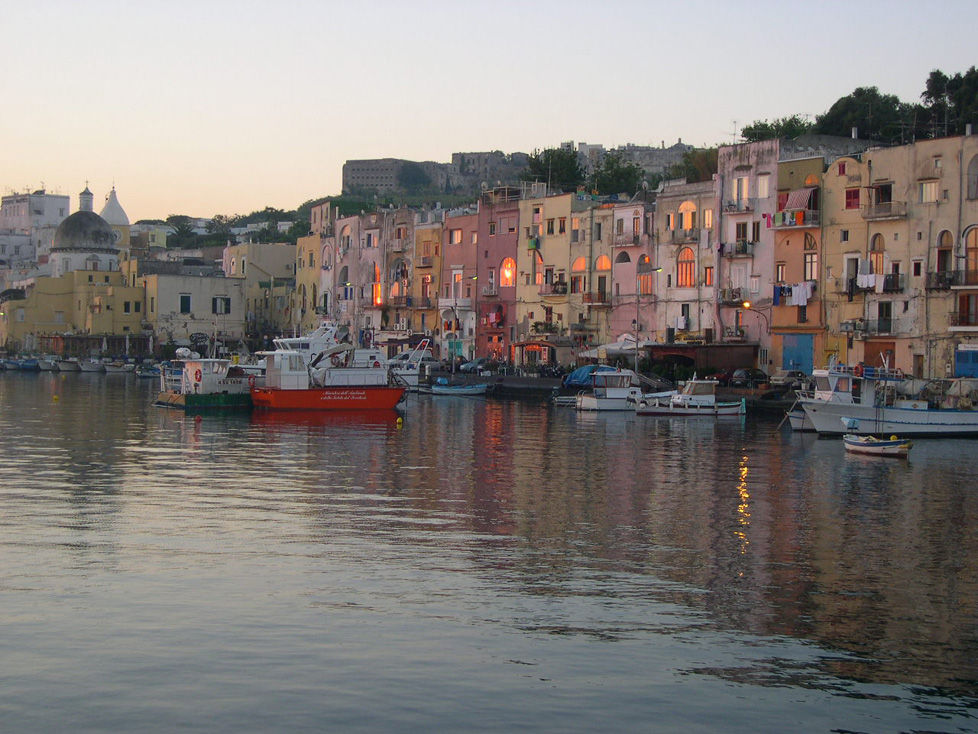Procida Capitale della Cultura 2022. Ecco i suoi plus e il modo migliore per scoprirla
E' la più piccola isola dell'arcipelago campano, eppure è uno scrigno di storia, architettura, natura e bellezza. Ora Cenerentola diventa una principessa.

E' la più piccola isola dell'arcipelago campano, eppure è uno scrigno di storia, architettura, natura e bellezza. Ora Cenerentola diventa una principessa.

(English translation below)
Nel 2022 Procida sarà una delle destinazioni preferite in Italia, visto che, notizia di ieri, è stata designata Capitale della Cultura. Ma se siete impazienti di visitare Procida, e non volete attendere fino al ’22, potete farlo subito riguardando il film Il Postino, di Michael Radford, con un ineguagliabile Massimo Troisi. E’ il film che più di qualsiasi altro sa raccontare l’isola nei suoi scorci mediterranei, nelle sue spiagge incastonate tra le rocce come gioielli preziosi, nelle sue fragranze agrumate, nei suoi colori incendiati sotto la luce del tramonto. Ma anche nella sua intima riservatezza. Si, perché contrariamente alle altre isole dell’arcipelago campano, le sfavillanti Ischia e Capri, Procida è sempre stata più ritrosa, schiva, introversa. Se Ischia e Capri adescavano i loro visitatori con lusinghe ed ammiccamenti, Procida rimaneva sempre in disparte, schiudendo la sua bellezza solo al cospetto di chi sapeva cercarla. E per riscoprire tutte le location procidane del meraviglioso film con Troisi e Noiret, vi consiglio un ottimo sito di cinefili che mette a confronto ogni singolo fotogramma del film con lo stesso luogo fotografato di recente. E’ uno splendido modo alternativo di viaggiare per l’isola e scoprirne gli angoli più suggestivi, come la marina di Corricella, dove il regista colloca la locanda di Beatrice (Maria Grazia Cucinotta) di cui il giovane postino è perdutamente innamorato.

Ma sono decine e decine le pellicole cinematografiche girate sull’isola, e a citarle tutte si finirebbe per stilare solo un arido elenco di titoli. Certo non si può non menzionare Il talento di Mr. Ripley, di Antony Minghella, un thriller inquietante con Matt Damon e Jude Law, che usa gli scenari procidani con grande maestria, oppure Detenuto in attesa di giudizio con Alberto Sordi, che ci offre splendide immagini dell’antico carcere situato sulla Terra Murata, l’imponente Palazzo Davalos. Ma anche il film di Damiano Damiani L’isola di Arturo, tratto dal romanzo di Elsa Morante del 1957 che le valse un Premio Strega, interamente ambientato sull’isola. O ancora la serie televisiva di Lina Wertmuller Francesca e Nunziata, con Sophia Loren, Giancarlo Giannini e Claudia Gerini tra gli interpreti.
Fino ad oggi mai un’isola, per giunta così piccola, era stata designata Capitale della Cultura in Italia. Questa designazione la mette a confronto con importanti città ricche di storia, arte e monumentale architettura come Palermo, Mantova, Siena, Ravenna, Lecce. Ne sarà all’altezza? E’ la domanda che sorge spontanea in chi conosce poco o per niente quest’isola. E la risposta è tutta custodita nella sua storia, nella sua geografia e nella sua urbanistica. Una terra che affonda le sue prime antropizzazioni nel lontano VIII secolo a.C., quando viene colonizzata dai Greci del Mar Egeo, ereditandone cultura e tradizioni, un’isola che impara l’arte delle fortificazioni per difendersi dalle incursioni dei Saraceni, che diventa crocevia di naviganti, esploratori, commercianti e profughi da ogni dove, e che costruisce sulla pesca non solo la sua economia, ma anche tutta la sua cultura e l’eccellente gastronomia.
Le motivazioni di questa scelta sono nella sua storia di inclusione e integrazione nei secoli, nella sua capacità di preservazione dei suoi beni culturali e naturali come l’isolotto di Vivara, gioiello naturalistico di importanza comunitaria e riserva naturale, collegato a Procida da un ponte, nella sua storia religiosa custodita nell’Abbazia di San Michele Arcangelo, che fu per tutto il Medio Evo centro di aggregazione ed importante punto di riferimento per la cultura benedettina del tempo. Qui il settecentesco soffitto ligneo a cassettoni in oro, realizzato dai più apprezzati artigiani napoletani, incastona una splendida tela del 1699 di pregevole manifattura la cui attribuzione è stata per anni disputata tra Luca Giordano e Luigi Garzi.
Procida è unica nelle sue case variopinte incollate le une alle altre per guadagnare spazio. I suoi tre porticcioli sono splendide tavolozze dove il rosa, il verde, il giallo e l’azzurro sembrano giocare a saltacavallo tra di loro per primeggiare davanti agli occhi dei naviganti che solcano le acque di fronte a quei porti, uno dei quali, la Corricella, è raggiungibile solo a piedi attraverso scalette e vicoletti. Qui il silenzio è spezzato solo dalle grida dei pescatori, dei ragazzini che giocano, e dai versi dei gabbiani che si azzuffano per recuperare il pesce intorno alle paranze.

E si sorprenderanno coloro che ancora non la conoscono, ma Procida è bella ancor più che per il mare, le piante d’agave e le scogliere di tufo, proprio per questa sua architettura piena di influenze mediterranee, caratterizzata soprattutto da archi e scale a dorso d’asino. Gli archi disegnano non solo i passaggi tra le stradine e le case, ma anche le luminose aperture su abitazioni scavate nella pietra, che di quell’arco fanno la loro unica fonte di luce. E le scale rampanti inseguono quegli stessi archi per raggiungere i piani superiori, in un fanciullesco acchiapparello di briosa vivacità. E così l’urbanistica di Procida diventa tutto un gioco di vuoti e di pieni che si alternano disegnando forme che diventano tipiche, come il vefio, che salta subito agli occhi quando il traghetto entra in porto. Il vefio è il tipico balcone di gusto arabeggiante, ricoperto da una volta ad arco. Così come di influenza araba sono anche tutti i tetti delle case sul porto, disegnati a cupola, proprio come facevano gli Arabi. Cupole che all’interno sono talvolta decorate con affreschi artigianali, disegnati da semplici imbianchini solo per arricchire le umili case dei pescatori.

Dunque alla domanda se Procida sarà all’altezza delle altre capitali della cultura, l’isola risponde orgogliosamente si, e lo fa con la storia del suo paesaggio e della sua architettura, che è considerata così meritevole da dedicarle pubblicazioni e studi. E tra i lavori più brillanti vorrei segnalare uno splendido volume di Salvatore Di Liello e Pasquale Rossi, Procida architettura e paesaggio, documenti e immagini per la storia dell’isola, che spiega la centralità mediterranea di quest’isola di grande fascinazione per artisti e scrittori di ogni provenienza.

Naturalmente avremo modo di riparlare di Procida, perché non è possibile esaurire in un breve articolo la ricchezza storica, paesaggistica, artistica, folcloristica, gastronomica e culturale di un’isola che con la sua superficie di meno di 4 chilometri quadrati ha l’insolenza di fronteggiare la gigantesca Napoli, la lussuosa Capri e la mondana Ischia senza temere confronti. Perché a lei basta poco per conquistarvi. Ad esempio con una deliziosa e dolcissima lingua, il cui nome intero è lingua di bue: è una pasta sfoglia fragrante farcita con una crema pasticcera aromatizzata al limone. Era la mia imperdibile colazione quando risiedevo sull’isola. Ma il piatto più evocativo è senz’altro lo spaghetto ai ricci di mare. L’ultima volta che l’ho mangiato è stato sulle palafitte della Silurenza, guardando l’azzurro del mare che, da quello specchio d’acqua che avevo di fronte, finiva per lambirmi direttamente il palato con quei ricci appena pescati, e mi inebriava le narici come nessun altro piatto di mare sa fare. Ma attenzione, è un piatto solo per papille gustative molto audaci.
ENGLISH VERSION
If you don’t want to wait until 2022 to visit Procida, which in that year will be the Capital of Culture, you can do it now by watching the film Il Postino, by Michael Radford, with an incomparable Massimo Troisi. It is the film that more than any other can tell the island in its Mediterranean views, in its beaches set among the rocks like precious jewels, in its citrus fragrances, in its colours set on fire under the light of the sunset. But also in its intimate secrecy. Yes, because unlike the other islands of the Campania archipelago, the sparkling Ischia and Capri, Procida has always been more reluctant, shy, introverted. If Ischia and Capri lured their visitors with flattery and winks, Procida always remained aloof, opening up its beauty only to those who knew how to find it. And to rediscover all the Procidan locations of the wonderful film with Troisi and Noiret, I recommend an excellent site for cinephiles that compares every single frame of the film with the same recently photographed place. It is a splendid alternative way to travel around the island and discover its most evocative corners, such as the marina of Corricella, where the filmmaker places the inn of Beatrice (Maria Grazia Cucinotta) of which the young postman is madly in love.
But there are dozens and dozens of films shot on the island, and I don’t want to write a dry list of titles. Of course, we cannot fail to mention The Talent of Mr Ripley, by Antony Minghella, a disturbing thriller with Matt Damon and Jude Law, who uses the Procidan scenarios with great skill, or Detenuto in attesa di giudizio with Alberto Sordi, who offers us splendid images of the ancient prison located on Terra Murata, the imposing Davalos Palace. But also Damiano Damiani’s film L’isola di Arturo, based on Elsa Morante’s 1957 novel which also earned her a Strega Award, entirely set on the island. Or the television series by Lina Wertmuller Francesca e Nunziata, with Sophia Loren, Giancarlo Giannini and Claudia Gerini among the performers.
Never before has an island, even so small, been designated the Capital of Culture in Italy. This designation compares it with important cities rich in history, art and monumental architecture such as Palermo, Mantova, Siena, Ravenna, Lecce. Will it be up to it? It is the question that arises spontaneously in those who know little or nothing about this island. And the answer is all kept in its history, its geography and its urban planning. A land that sinks its first anthropization in the distant eighth century BC, when it was colonized by the Greeks of the Aegean Sea, inheriting its culture and traditions, an island that learns the art of fortifications to defend itself from Saracen raids, which becomes a crossroads for sailors, explorers, traders and refugees from all over, and who builds not only its economy on fishing but also all its culture and excellent gastronomy.
The reasons for this choice are in its history of inclusion and integration over the centuries, in its ability to preserve its cultural and natural assets such as the islet of Vivara, a naturalistic jewel of European importance and nature reserve, connected to Procida by a bridge, in its religious history kept in the Abbey of San Michele Arcangelo, which was a centre of aggregation and an important point of reference for the Benedictine culture of the time throughout the Middle Ages. Here the eighteenth-century wooden coffered ceiling in gold, made by the most appreciated Neapolitan artisans, embeds a splendid canvas of 1699 of valuable manufacture whose attribution has been disputed for years between Luca Giordano and Luigi Garzi.
Procida is unique in its multicoloured houses glued to each other to save space. Its three marinas are splendid palettes where pink, green, yellow and blue seem to compete with each other to excel in front of the eyes of the sailors who cut through the waters in front of those ports, one of which, Corricella, can only be reached on foot through stairs and alleys. Here the silence is only broken by the cries of the fishermen, the kids playing, and the calls of the seagulls fighting to retrieve the fish around the fishing boats.
And those who still do not know it will be surprised, but Procida is beautiful even more than for the sea, the agave plants and the tuff cliffs, precisely for this architecture full of Mediterranean influences, characterized above all by arches and curved stairs. The arches draw not only the passages between the streets and the houses but also the luminous openings on houses carved into the stone, which make that arch their only source of light. And the rampant stairs follow those same arches to reach the upper floors, in a boyish catcher of lively vivacity. And so the urban planning of Procida becomes a whole game of voids and solids, drawing shapes that become typical, like the vefio, which immediately catches the eye when the ferry enters the port. The vefio is the typical Arabian-style balcony, covered by an arched vault. As well as of Arab influence are all the roofs of the houses on the port, designed in a dome, just like the Arabs did. Domes that inside are sometimes decorated with handcrafted frescoes, designed by simple painters only to enrich the humble fishermen’s houses.
So when asked whether Procida will be up to par with the other capitals of culture, the island proudly replies yes, and it does so with the history of its landscape and its architecture, which is considered so worthy to dedicate publications and studies to it. And among the most brilliant works, I would like to point out a splendid volume by Salvatore Di Liello and Pasquale Rossi, Procida architettura e paesaggio, documenti e immagini per la storia dell’isola, which explains the Mediterranean centrality of this island of great fascination for artists and writers.
Naturally, we will have the opportunity to talk about Procida again, because it is not possible to exhaust in a short article the historical, naturalistic, artistic, folkloristic, gastronomic and cultural richness of an island that with its surface of less than 4 square kilometres has the insolence of face the gorgeous Naples, the luxurious Capri and the worldly Ischia without fear of comparisons. Because it doesn’t take much for her to win you over. For example, with a delicious and very sweet lingua, whose full name is lingua di bue: it is a fragrant pastry filled with a lemon flavoured custard. It was my must-eat breakfast when living on the island. But the most evocative dish is undoubtedly spaghetti with sea urchins. The last time I ate it was on the stilts of the Silurenza, looking at the blue of the sea that, from that mirror of water in front of me, ended up directly on my palate with those fresh sea urchins, and inebriated me like no other seafood dish can do. But beware, it’s a dish only for very daring taste.
